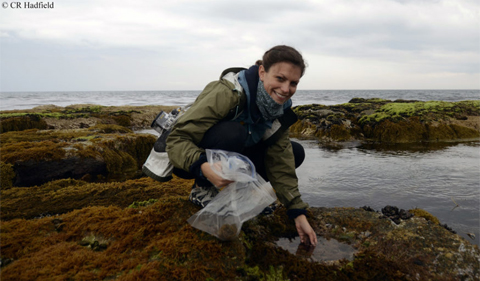
Dr. Stacy Krueger-Hadfield
The Environmental & Plant Biology Colloquium Series presents Dr. Stacy Krueger-Hadfield on “The Curious Case of Complex Life Cycles: Algal Mating System Variation and Range Expansions” on Friday, Sept. 29, at 11:50 a.m. in Porter Hall 104.
Krueger-Hadfield is an Assistant Professor in the Department of Biology at The University of Alabama at Birmingham.
Abstract: Baker’s Law predicts uniparental reproduction will facilitate colonization success in novel habitats. While evidence supports this prediction among colonizing plants and animals, few studies have investigated shifts in reproductive mode in haplo-diplontic species, in which there are both prolonged haploid and diploid stages. In these life cycles, selfing can occur despite cross-fertilization and asexual reproduction can yield the dominance of either haploid or diploid individuals. These subtle differences, unique to haplo-diplontic taxa, can have profound eco-evolutionary consequences. Using the red algae Chondrus crispus, Mastocarpus sp., and Gracilaria vermiculophylla as examples, I will highlight patterns of mating system variation and range expansions across spatial scales. Intergametophytic selfing, or cross-fertilization between haploid siblings, affects the microgeographic structure in C. crispus and has implications for adaptation in the intertidal. Asexuality results in the loss of the crustose life history stage in Mastocarpus sp. The maintenance of these patterns of geographic parthenogenesis do not appear to driven by the same mechanisms that underlie these patterns in higher plants or animals. Rather, the loss of a free-living stage likely enables range expansions along tidal and latitudinal gradients. In the case of G. vermiculophylla, the ecological shift from attached to unattached thalli, ostensibly necessitated by the invasion of soft-sediment habitats, correlated with shifts from sexual to asexual reproduction during three distinct invasions along North American and European coastlines. A labile mating system likely facilitates colonization success and subsequent range expansion, but the long-term eco-evolutionary impacts will depend on the levels of selfing, which ploidy stages may be lost as a result of asexuality, and the degree to various reproductive modes may be canalized.



















Comments